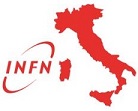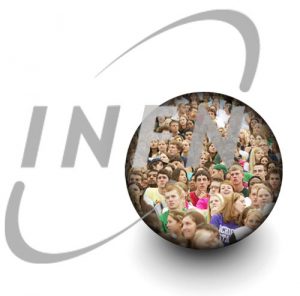
The mission and its origins
The INFN is the national public research body, supervised by the Ministry of Education, University and Research (MIUR), dedicated to the study of the fundamental constituents of matter and the laws that govern them. He carries out research, both theoretical and experimental, in the fields of subnuclear, nuclear and astroparticle physics.
INFN‘s research activities are all carried out in a field of international competition and in close collaboration with the Italian university world, on the basis of consolidated and long-standing relationships. The fundamental research in these sectors requires the use of cutting-edge research technologies and tools that INFN develops both in its own laboratories and in collaboration with the industrial world. The INFN was established on August 8, 1951 by groups of the Universities of Rome, Padua, Turin and Milan in order to continue and develop the scientific tradition begun in the ’30s with the theoretical and experimental researches of nuclear physics by Enrico Fermi and of his school. In the second half of the ’50s, INFN designed and built the first Italian accelerator, the electrosynchrotron realized in Frascati where the first National Laboratory of the Institute was born. In the same period, INFN‘s participation in the research activities of CERN, the European Center for Nuclear Research in Geneva, began for the construction and use of increasingly powerful accelerator machines. Today the institution has about 5000 scientists whose contribution is recognized internationally not only in the various European laboratories, but in numerous world research centers.
The organization
The decision-making body of the institute is the Board of Directors, made up of the President and the Executive Committee, the four Directors of the National Laboratories and 20 Sector Directors, representatives of the Ministry of Education, the Ministry of Economic Development and INFN personnel. The implementation of the decisions of the Council is, as the case may be, for the President, the Board, the Laboratory or Section Managers for the organization of the activities at the local level, the General Manager for the organization of the activities of the Central Administration.

In addition to the 4 National Laboratories, three National Centers are part of the INFN structure: CNAF, GGI and TIFPA. For the carrying out of the scientific activity, the Institute avails itself of five National Scientific Commissions (CSN), consultative of the Governing Council. They cover respectively the following scientific lines: subnuclear physics (CSN1), astroparticle physics (CSN2), nuclear physics (CSN3), theoretical physics (CSN4), technological and interdisciplinary research (CSN5). The long experience gained over the decades has shown that this INFN organization represents an effective balance between centralized and decentralized management.
The INFN has a significant impact on Italian society. Indeed, its activities have been selected for decades and continue to select researchers and research managers of great quality. It is not by chance that the cadres that come from the INFN have directed other important Italian research centers and are called to direct leading scientific structures abroad, from Europe to the United States.

Another element of qualification is the training of young people: every year a thousand graduates, PhD students and grant holders participate in the INFN activity. A substantial percentage of graduates in physics carries out their thesis in the activities of the institute. Furthermore, with the birth of the Gran Sasso Science Institute, an international high-school training school will open.
There is also a positive impact on the Italian economy, due to the close collaboration that INFN makes with hi-tech companies, especially small and medium-sized enterprises (SMEs). And this is on national projects that, above all, on major international programs. For example, the contribution made by Italian companies to the construction of the most technologically advanced components of the LHC particle accelerator at CERN in Geneva was particularly significant.
The medical and health implications in general of the technologies and know-how developed by INFN to build their experiments are of great importance. The examples are many: one of the most important is the development in Italy of technologies for the treatment of tumors through protons and carbon ions (adrotherapy). INFN has accumulated more than ten years of direct experience in its laboratories in Catania and has created the CNAO machine for the therapy of Pavia. The INFN is also a national and international player in the dissemination of GRID, the supercomputing network, and the development of its applications to other scientific disciplines, electronic commerce and culture. Moreover, the institute is engaged with its own tools in the analysis and study of cultural heritage and the environment.
The INFN also has a strong vocation for the dissemination of scientific culture. It takes part in all the main events of national dissemination and organizes every year several exhibitions and events, including television, throughout the country.
